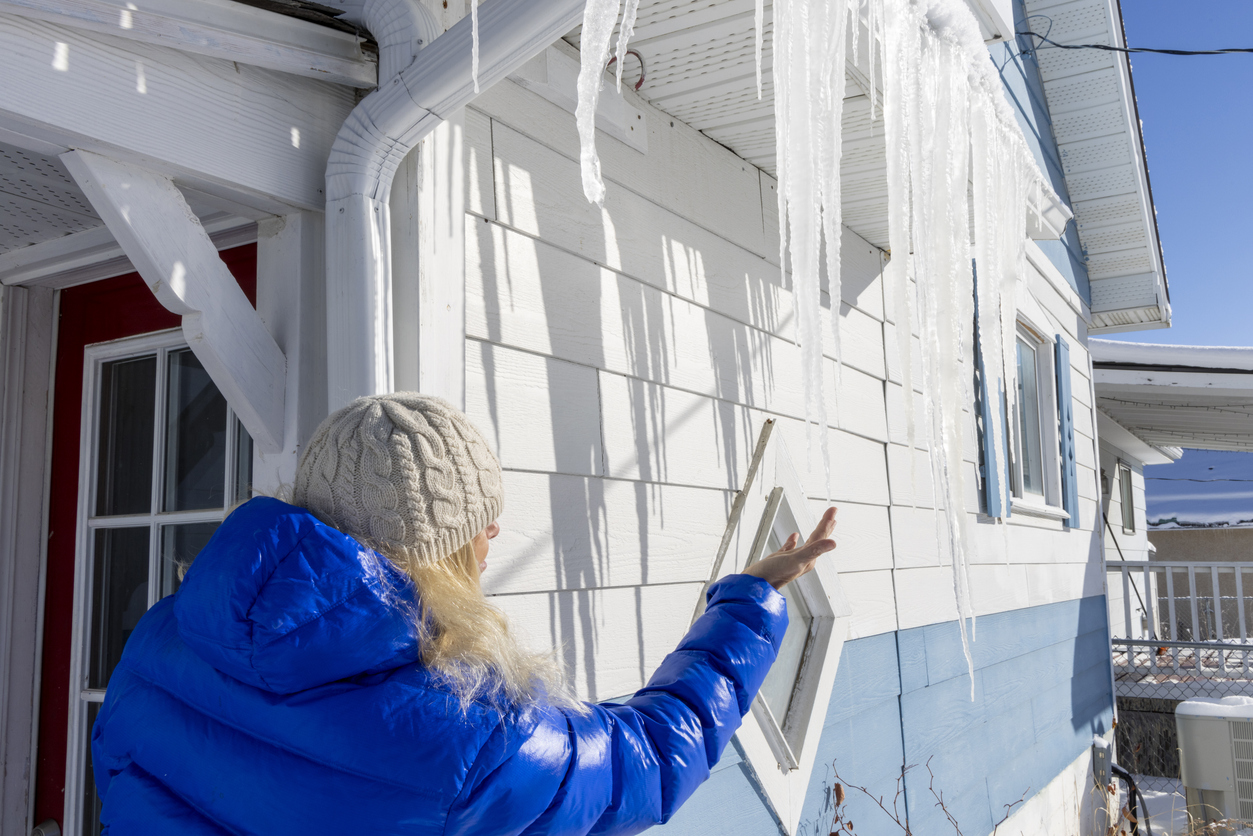The FC&S Bulletin Questions and Answers opined that damage caused by dead bodies is covered. A federal judge recently disagreed, finding damage caused by dead bodies was not covered.
Six years ago, Christine Barlow, a CPCU and assistant editor of the FC&S Bulletins noted the following claims question:
Some of the most unnerving claims an adjuster experiences are those concerning dead bodies, and we have had many recent questions regarding the deceased and what to do with them. Particularly, is there coverage under the homeowner’s policy for clean up for both the dwelling and personal property? Are dead bodies’ pollutants? And what about self inflicted situations; are they excluded as intentional acts?
She concluded:
But does the definition of pollutant really apply to a dead body and bodily fluids? The policy wording specifies chemicals, chemical by-products, or the result of some manufacturing operation. Dead bodies aren’t manufactured, nor are they a chemical by product.
Let’s look at the wording again. The policy definition begins: “any solid, liquid, gaseous…” which is pretty all encompassing. The next few words however are important as they pertain directly to the solids, liquids or gases: “…or thermal irritant or contaminant…” An irritant is something that irritates the skin on contact. While bodily fluids in a house may be unnerving, they are not irritants. They do not create inflammation when they come into contact with the skin. A contaminant is something that contaminates or pollutes; according to Merriam Webster Online , to contaminate is to soil, stain, corrupt, or infect by contact or association; to make inferior or impure by admixture.
Bodily fluids certainly would soil the floor, carpet, etc. but would they make it inferior by admixture? The policy gives examples of pollutants; it lists smoke, vapor, soot, fumes, acids, alkalis, chemicals and waste. All of these are by-products of manufacturing processes. The argument can be made that smoke and soot are the result of a natural process, the burning of combustible objects. In relation to the pollution exclusion they need to be viewed in context. The context of the pollution exclusion involves substances created by a manufacturing process.
…
The remains of a body from a self-inflicted injury or a decomposed body that is discovered days or weeks after death do not fit any of these pollution definitions. If the policy intent had been to exclude biological emanations, language to that effect could have easily been added. Therefore, a dead body and its fluids are not pollutants. Granted, with growing concern about pandemic flu and other viruses policies may be changed in the future, but for now, the policy language does not exclude human remains as pollutants. So there is coverage for the dwelling.
…
As discussed, dead bodies and their effluences are not considered pollutants, so coverage exists for the clean-up and removal of remains from the dwelling. Regarding property coverage that is on a named peril basis, the actual cause of loss is the deciding element for coverage. So when you see dead people, remember that there is coverage in many instances.
In Certain Underwriters at Lloyd’s London v. Creagh,1 Federal Judge Jan E. DuBois disagreed.
This case arose when the owner of an apartment building, defendant William Creagh, discovered the dead body of one of his tenants, Arthur Doud. In August of 2011, Doud’s body was found collapsed over a toilet in his second floor apartment bathroom. He had been dead for possibly as much as two weeks. Bodily fluids had seeped into the bathroom floor and had contaminated the first floor bathroom directly below. Biological material was also found in the kitchen and bedroom of Doud’s apartment, and a powerful foul odor pervaded the unit.
Following the discovery of the dead body, Creagh called police to the apartment. Creagh testified that, upon arriving and investigating the scene, the police instructed him to clean up the apartment as soon as possible. He concluded that, with that instruction, he had no choice but to proceed with clean-up of the apartment. Creagh immediately retained a company, Aftermath, Inc., to sanitize and otherwise remediate the building. Creagh also engaged Evans Services, LLC to reconstruct areas of the building that were removed or damaged in the clean-up.
Defendants submitted an insurance claim to Lloyd’s for the cost of remediation and reconstruction charged by Aftermath and Evans Services, eventually totaling approximately $180,000. A few days after submitting the claim, Creagh spoke by phone with Robert Thompson, the insurance adjuster employed by plaintiff to adjust defendants’ claim. Creagh testified at his deposition that during the phone call Thompson told Creagh to submit the final bill for the remediation of the apartment and Thompson would take care of it. Creagh stated that he got the impression his claim was covered under the policy because of the overall positive tone of the conversation, and the lack of statements by Thompson that the policy might not cover the damage at issue.
Lloyds argued “three separate policy exclusions preclude coverage… (1) the microorganism exclusion, (2) the seepage exclusion, and (3) the pollutants exclusion.” Judge DuBois agreed that the first two applied.
Regarding the microorganism issue:
Plaintiff first argues that the policy’s “Microorganism Exclusion” precludes coverage for the claimed damages in this case. This provision of the contract states in pertinent part that: “This Policy does not insure any loss, damage, claim, cost, expense or other sum directly or indirectly arising out of or relating to: mold, mildew, fungus, spores or other microorganism of any type, nature, or description ….” (Exhibit D–1, at 39.)
Plaintiff claims that the damages which required remediation in this case resulted from contamination with Doud’s bodily fluids, which in turn contained bacteria and other microorganisms. Accordingly, plaintiff argues that the Microorganism Exclusion applies and precludes coverage for such damages. Defendants, in response, argue that there is no direct evidence that there were any bacteria present in Doud’s bodily fluids, and that consequently, the exclusion does not apply.
For the policy exclusion to apply in this case, plaintiff must produce evidence that bacteria or other microorganisms were present in Arthur Doud’s bodily fluids, and that they caused the damages at issue.
…
The uncontroverted expert evidence, corroborated by Creagh’s testimony regarding odor consistent with bacterial formation, establishes that bacteria were present in the bodily fluids of Arthur Doud, and the Court so finds. There is no genuine dispute of material fact on this aspect of the case.
Regarding the seepage exclusion:
Plaintiff next argues that the damages in this case are also excluded from coverage pursuant to the “Seepage and/or Pollution and/or Contamination Exclusion.” That provision of the policy states in part: “[T]his Certificate does not insure: (a) any loss, damage, cost or expense, or (b) any increase in insured loss, damage cost or expense … which arises from any kind of seepage or any kind of pollution and/or contamination ….” (D–1, at 42.) This provision excludes coverage for losses caused by seepage of, inter alia, “any substance designated or defined as toxic, dangerous, hazardous or deleterious to persons or the environment under any … Federal, State, Provincial, Municipal or other law, ordinance, or regulation ….
…
For this exclusion to apply, plaintiff must present evidence that the bodily fluids caused damage by “seepage”, “pollution,” or “contamination,” and that the fluids themselves are regulated as hazardous materials.
…
The Court concludes that there was “seepage” of the bodily fluids involved in this case, and the fluids themselves were “designated or defined as toxic, dangerous, hazardous or deleterious to persons … under … Federal … law.”… Thus, coverage for the damage caused by the fluids is precluded by the “Seepage and/or Pollution and/or Contamination Exclusion.” As previously stated, coverage is also precluded by the Microorganism Exclusion. Accordingly, the Court grants plaintiff’s motion for summary judgment on plaintiff’s declaratory judgment claim.
The case about damage caused by dead bodies is no longer alive in Judge DuBois’s court. I plan to call my old friend and colleague, Harry Begier, who represented the policyholder, to find out about the appeal.



